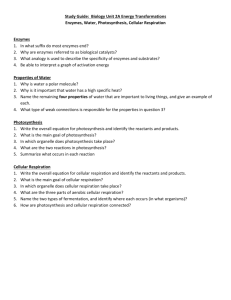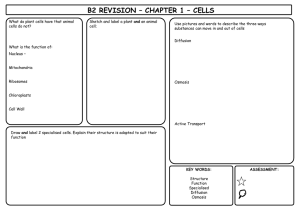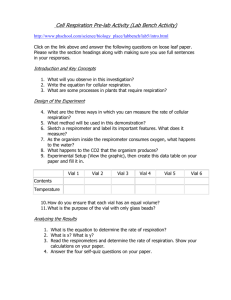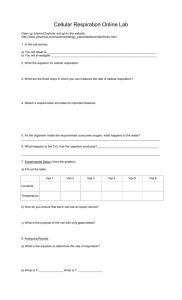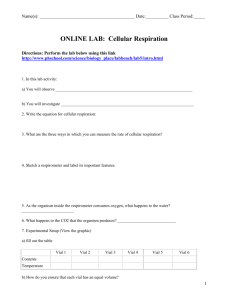cell energetics test essay questions
advertisement
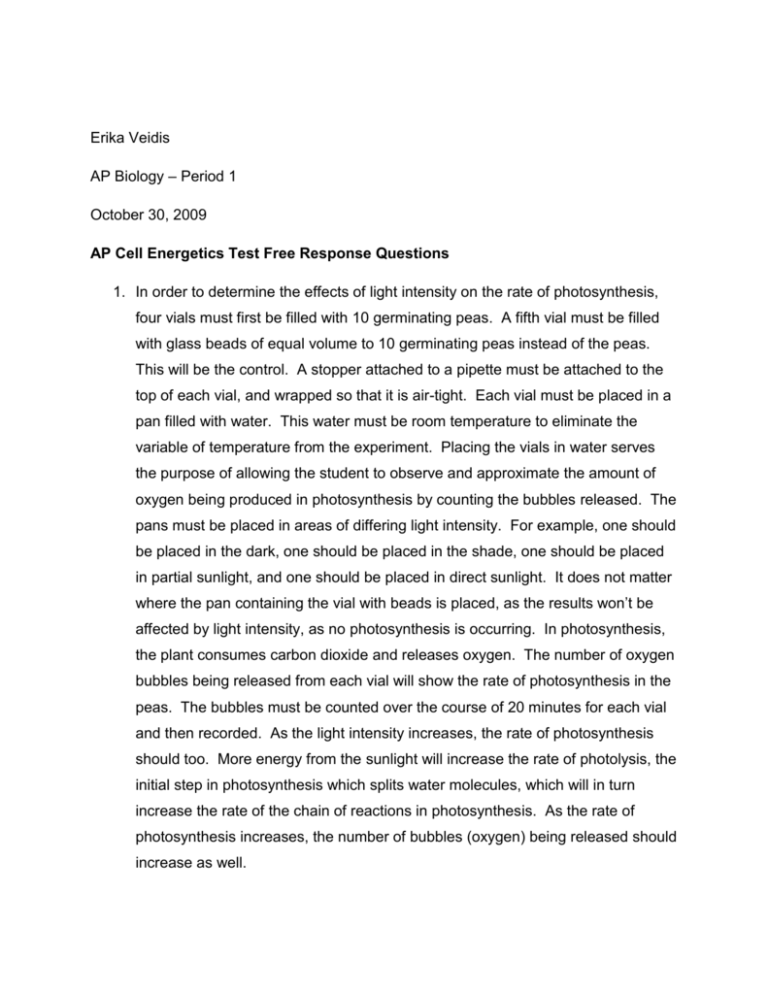
Erika Veidis AP Biology – Period 1 October 30, 2009 AP Cell Energetics Test Free Response Questions 1. In order to determine the effects of light intensity on the rate of photosynthesis, four vials must first be filled with 10 germinating peas. A fifth vial must be filled with glass beads of equal volume to 10 germinating peas instead of the peas. This will be the control. A stopper attached to a pipette must be attached to the top of each vial, and wrapped so that it is air-tight. Each vial must be placed in a pan filled with water. This water must be room temperature to eliminate the variable of temperature from the experiment. Placing the vials in water serves the purpose of allowing the student to observe and approximate the amount of oxygen being produced in photosynthesis by counting the bubbles released. The pans must be placed in areas of differing light intensity. For example, one should be placed in the dark, one should be placed in the shade, one should be placed in partial sunlight, and one should be placed in direct sunlight. It does not matter where the pan containing the vial with beads is placed, as the results won’t be affected by light intensity, as no photosynthesis is occurring. In photosynthesis, the plant consumes carbon dioxide and releases oxygen. The number of oxygen bubbles being released from each vial will show the rate of photosynthesis in the peas. The bubbles must be counted over the course of 20 minutes for each vial and then recorded. As the light intensity increases, the rate of photosynthesis should too. More energy from the sunlight will increase the rate of photolysis, the initial step in photosynthesis which splits water molecules, which will in turn increase the rate of the chain of reactions in photosynthesis. As the rate of photosynthesis increases, the number of bubbles (oxygen) being released should increase as well. 2. The optimum temperature for respiration in yeast is 30o Celsius. Enzymes work best at a specific temperature, and since respiration is a series of enzymecatalyzed reactions, temperature affects the rate of respiration. As temperature increases, the kinetic energy of the molecules increase, which causes the reactions to speed up. However, too high temperatures may cause some enzymes to denature, or unravel and lose function, which explains the decrease in the rate of respiration. At 70o C, the rate of respiration, measured by the number of bubbles of gas per minute, is 0, which means that respiration is not occurring at all, due to the denaturing of the enzymes. The enzymes reached their peak at 30o, the optimum temperature, before the temperature proved to be unfavorable to their function. Yeast cells are placed in an apparatus with a solution of sugar. Four of these apparatuses are made, each with the same amount of yeast cells and sugar solution. Each is filled with a solution with a different pH. The apparatus detects bubbles of gas released by yeast cells, which will provide data about how the pH affects the rate of respiration. These results should be similar to the results of the experiment concerning the effects of temperature on the rate of respiration, in that the rate of respiration should increase as the enzymes approach an optimum pH, and then decrease as the enzymes get denatured by too high of a pH.



